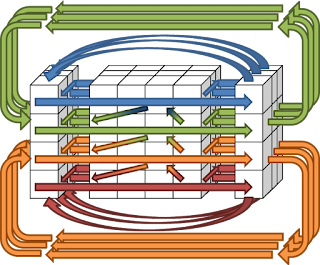@benhammersley at #RSAwork talks about the future of office work, and identifies some of the ways that organizations make themselves stupid. The irony is that a lot of these mechanisms were supposed to make offices more productive and efficient, and to promote collaboration and creativity. As Ben puts it
“We have optimized being on top of things rather than getting to the bottom of things.”
Let’s start with open plan offices. As Ben tells the story, these were introduced in an ideological attempt (supposedly originating in North California) to flatten the office hierarchy, to remove barriers between people, and to encourage people and technology to work together in perfect harmony. There are various dysfunctional versions of this Californian Ideology – see my post All Chewed Over By Machines (May 2011).
In practice, various interesting forms of behaviour emerge in open plan offices. Ben notes the widespread practice of more powerful workers grabbing the desks near to the wall, leaving juniors huddled in the middle in a state of permanent anxiety, as if they were antelope anticipating the lion’s pounce.
Many offices are designed as semi-open plan, with people huddled in cubicles, but with the constant chance of someone popping a head over the partition.
In some offices, there is a deliberate policy to move people around – sometimes called hot-desking. One of the supposed benefits of this policy is that it encourages workers to constantly develop new relationships with their transient neighbours. For companies whose workers don’t spend all their time in the office, this policy also reduces the amount of office space required. However, the uncertainty and anxiety of getting any desk, let alone a decent desk near the wall and away from the more irritating co-workers, might be regarded as a negative factor.
Putting aside the economics and culture and psychological impact of open plan offices, the essential justification is that they promote communication and collaboration. These elements are necessary but not sufficient for productivity and innovation in a knowledge-based organization. Not sufficient because productivity and innovation also depend on concentrated hard work.
Read more »

